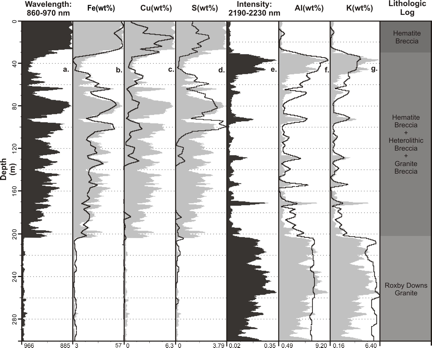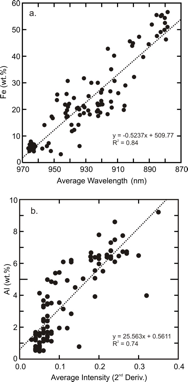Mineral Mapping Research
|
|||||||||
Automated drill core scanning spectrometers have been shown to be capable of "rapidly collecting compositional data from the surface of drill core, and these datasets can provide compositional data at a much higher spatial resolution (e.g. every 8 mms) than traditional geochemical techniques (e.g. every 2.5 or 5 meters)." (Tappert et al 2010)
Go to Oil Sands Research | Mining Research |



